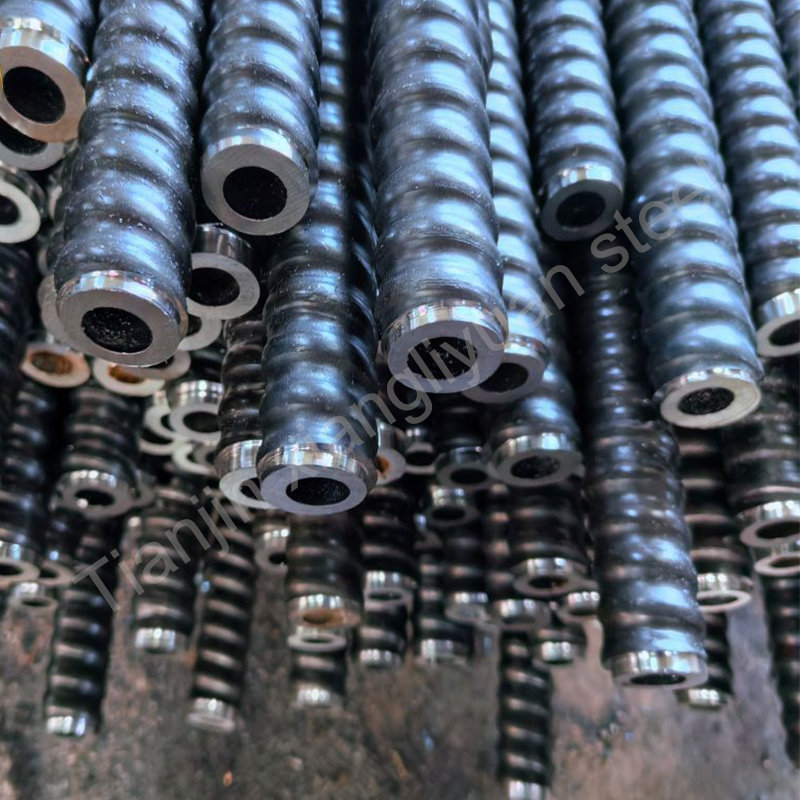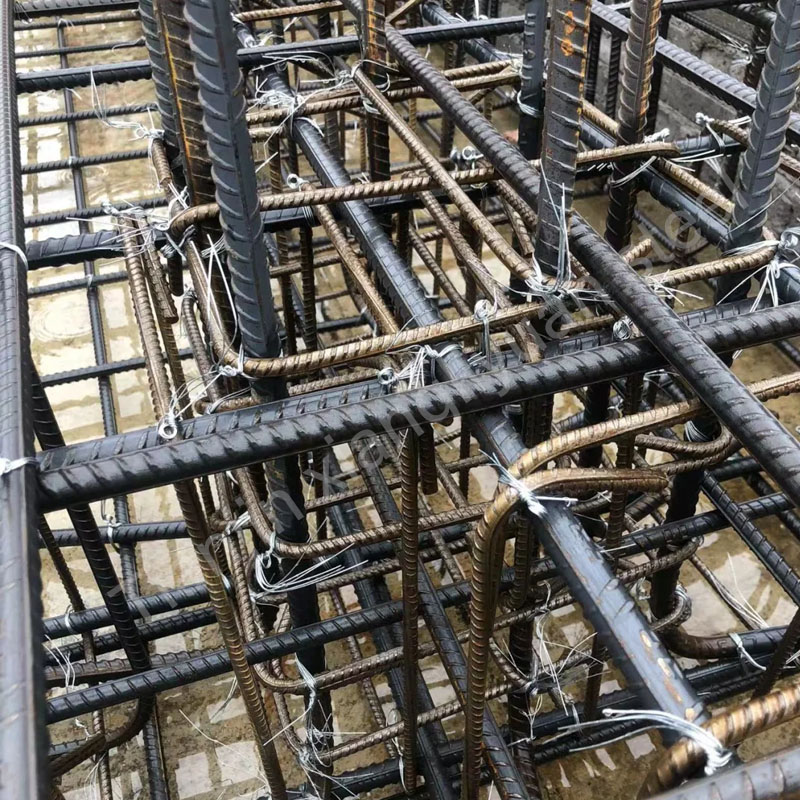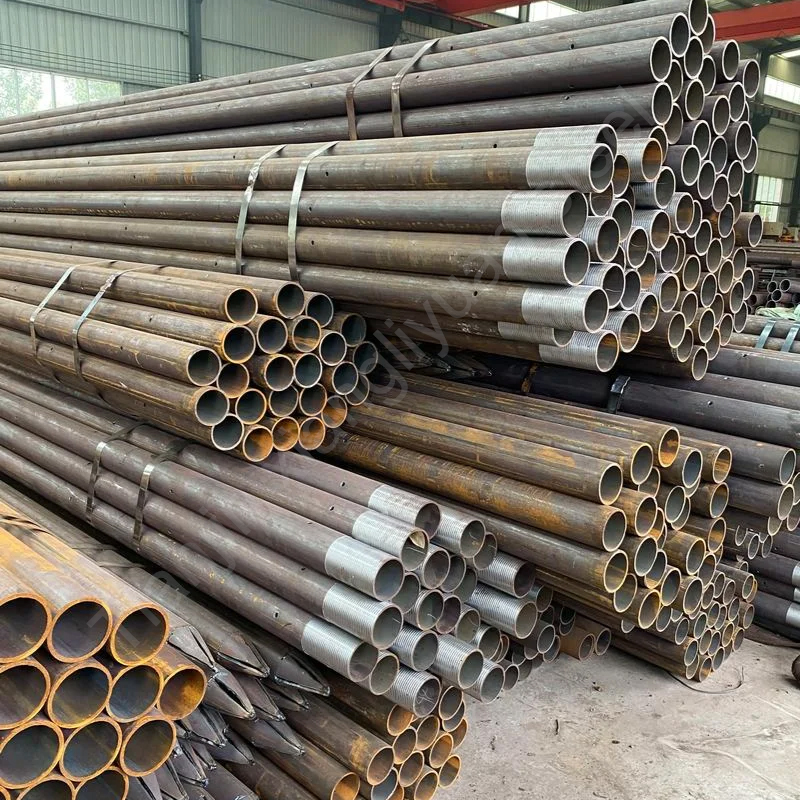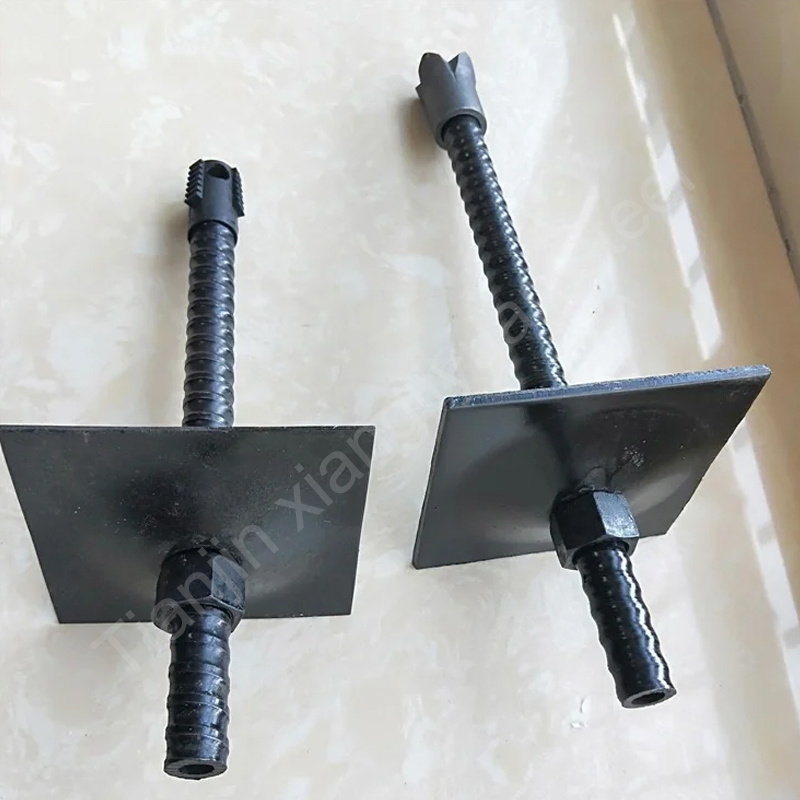Hollow anchor bars are a type of support material used in geological engineering, mine support, tunnel construction, slope stabilization and other projects, with a self-drilling function. Its main function is to strengthen the structural stability of rock formations and soil and prevent collapse. Compared with traditional anchor rods, hollow anchor rods can not only serve as part of the support structure, but also as a grouting channel to enhance the support effect.
1. Material of hollow anchor rods
The main material of hollow anchor rods is usually high-strength alloy steel to adapt to complex construction environments and high-strength requirements. Commonly used materials include 40Cr, 42CrMo, 20MnSi, etc. These materials have high tensile strength and shear strength, ensuring that hollow anchor rods can remain stable under greater pressure and stress, and are not easy to deform and break. In addition, some hollow anchor rods will also use surface galvanizing or spraying of anti-corrosion materials to increase corrosion resistance, especially in environments with abundant groundwater or strong corrosiveness.
2. Steel grades and standards
In terms of steel grades, hollow anchor rods usually use steel that meets international and national standards, such as high-strength alloy steels such as 40Cr and 42CrMo specified in GB/T 3077 (Technical Conditions for Alloy Structural Steel). These steels have high strength and good toughness after heat treatment and are suitable for use under high load conditions. In addition, some engineering projects will choose different steel grades and specifications according to specific use requirements to meet actual construction conditions.
There are relevant standards at home and abroad for the production and use of hollow anchor rods. For example, China’s “Technical Specifications for Hollow Anchor Rods for Geological Drilling” stipulates the specifications, dimensions, material properties and processing technology of hollow anchor rods. International standards such as ISO 1720 and ISO 2394 also make detailed provisions on the quality and use conditions of hollow anchor rods. The purpose of these standards is to ensure the production quality and construction safety of hollow anchor rods.
3. Structure and type of hollow anchor bars
The hollow anchor rod consists of a rod body, a connector, an anchor head and a pad, with a through hollow channel in the center. This structure can not only bear high loads, but also realize grouting through the channel during construction, thereby reinforcing the rock and soil and forming a strong support effect. According to different use occasions, hollow anchor rods can be divided into different types, such as self-drilling hollow anchor rods, combined hollow anchor rods, threaded hollow anchor rods, etc.
Self-drilling hollow anchor rod: It comes with a drill bit. There is no need to pre-drill holes during construction. It is directly drilled into the rock and soil by rotating the anchor rod, and grouting is performed at the same time. It is suitable for hard rock formations and complex geological conditions.
Combined hollow anchor rod: It adopts a multi-stage structure, and the length of the anchor rod can be flexibly adjusted according to the needs of the construction site, which is suitable for deep hole support.
Threaded hollow anchor rod: The surface has threads, which can better combine with the rock mass during installation, improve the anchoring effect, and is suitable for soft soil and mudstone.
IV. Uses of hollow anchor rods
hollow anchor bars have a wide range of applications, especially in tunnel engineering, mining, foundation pit support and slope reinforcement. Its main uses include:
Tunnel construction: During tunnel construction, hollow anchor rods can be used as temporary or permanent support to prevent rock collapse and ensure construction safety.
Slope stability: In slope protection projects, hollow anchor rods can effectively prevent landslides or soil slides, and are particularly suitable for the reinforcement of steep slopes.
Foundation pit support: In foundation pit support during construction, hollow anchor rods can be used as temporary support structures to prevent soil displacement and foundation pit instability.
Mine support: During mining, hollow anchor rods can support mine walls, effectively prevent mine collapse, and improve the safety of mining operations.
V. Advantages of hollow anchor bars
Convenient construction: Hollow anchor rods adopt a self-drilling design, which eliminates the drilling steps of traditional anchor rods and shortens the construction period.
Strong support effect: The design of the hollow structure allows high-pressure grouting to be achieved during the support process, so that the anchor rods are more closely combined with the rock and soil, and the support effect is more significant.
Strong adaptability: hollow anchor bars can be applied to various geological conditions, from soft soil to hard rock, and can provide good support effects.
Economical: Compared with traditional anchor rods, the construction process of hollow anchor rods is simpler, the construction speed is faster, and the overall cost is relatively low.
In summary, hollow anchor bars have broad application prospects in modern engineering. Their high strength, construction convenience and reliable support effect make them an important choice in underground engineering and slope protection. With the continuous advancement of technology and the improvement of standards, the performance of hollow anchor rods will be further improved to meet the needs of more difficult engineering projects.





